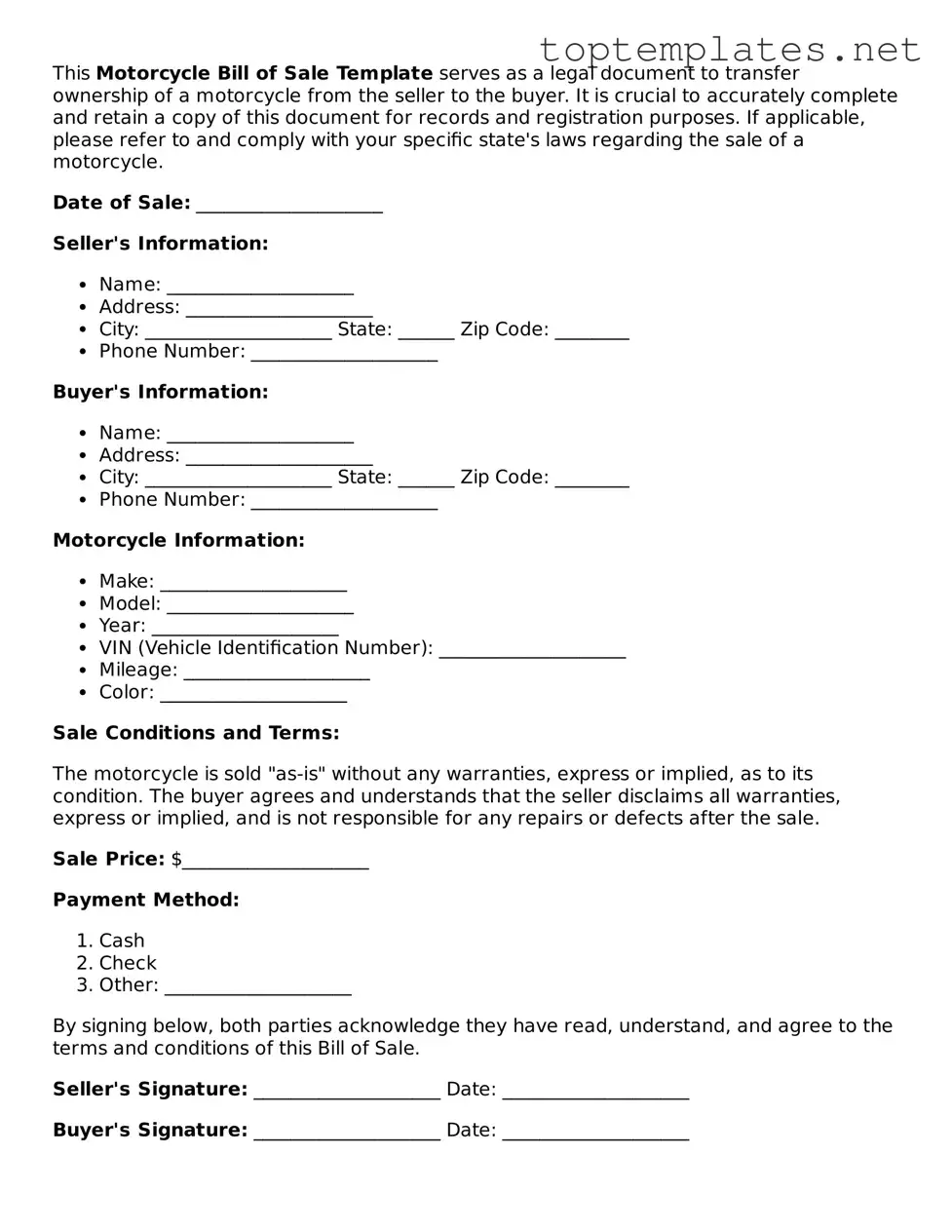What is a Motorcycle Bill of Sale?
A Motorcycle Bill of Sale is a legal document that records the transaction details when one party sells a motorcycle to another. It confirms that the ownership of the motorcycle has been transferred from the seller to the buyer. This form typically includes information like the make, model, year, and VIN of the motorcycle, as well as the names and addresses of the seller and buyer, and the sale price.
Why do I need a Motorcycle Bill of Sale?
Having a Motorcycle Bill of Sale is crucial because it serves as proof of purchase and ownership transfer. It is essential for the buyer's protection, showing they legally own the motorcycle. For the seller, it confirms that they have legally transferred ownership and are no longer responsible for the motorcycle. This document is also often required for registration and insurance purposes.
What information should be included in a Motorcycle Bill of Sale?
A comprehensive Motorcycle Bill of Sale should include the motorcycle's make, model, year, VIN (Vehicle Identification Number), and mileage at the time of sale. It should also have the sale date, sale price, names and signatures of both the seller and the buyer, and any conditions or warranties. Including the contact information of both parties is also recommended for any future correspondence.
Is a witness or notary required for a Motorcycle Bill of Sale?
Whether a witness or notary is required depends on local laws. While not always mandatory, having a neutral third party witness the signing or a notary public notarize the document can add an extra layer of protection and validity. It helps prevent future disputes by verifying that the signatures are genuine and that both parties entered the agreement willingly.
Can a Motorcycle Bill of Sale be hand-written?
Yes, a Motorcycle Bill of Sale can be hand-written, as long as it contains all the necessary information that makes it legally binding. However, for the sake of clarity and professionalism, it is recommended to use a typed document. Many available templates can ensure all required details are included and clearly understood by both parties.
What should I do after completing a Motorcycle Bill of Sale?
After completing a Motorcycle Bill of Sale, both the buyer and seller should keep a copy for their records. The buyer will need this document for registering the motorcycle in their name and possibly for insurance purposes. The seller should hold onto a copy to have a record of the sale and release of liability.
Is a Bill of Sale enough to legally own a motorcycle?
A Bill of Sale is a crucial part of transferring ownership, but it might not be the only document required. The buyer also needs to ensure that they receive the motorcycle's title from the seller, showing that there are no liens against the motorcycle and that the seller has the legal right to sell it. Additionally, the buyer should check with their local Department of Motor Vehicles (DMV) or equivalent authority for any other documentation needed to complete the transfer of ownership and properly register the motorcycle.
